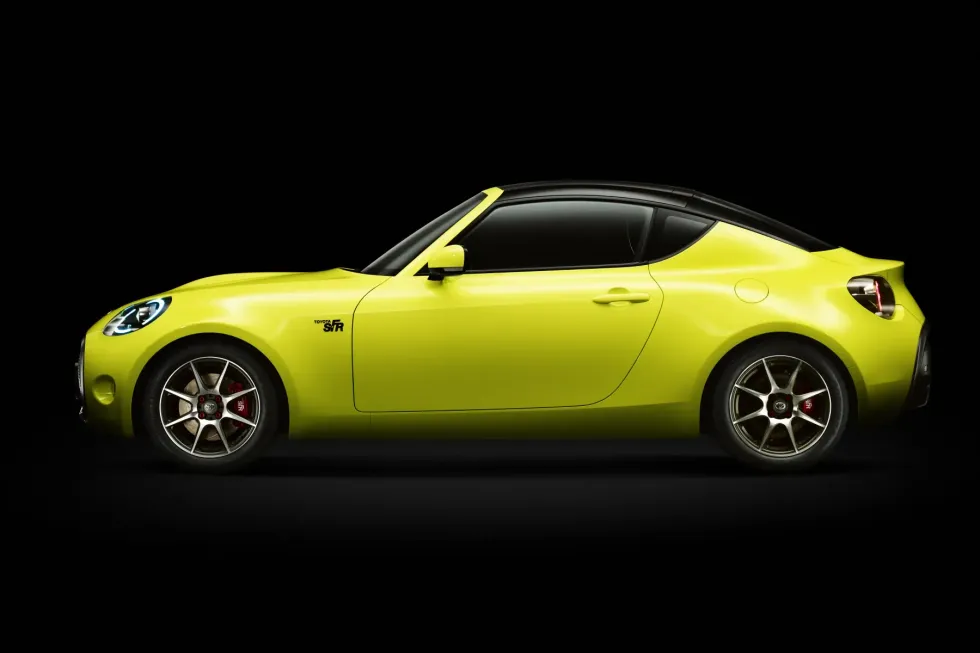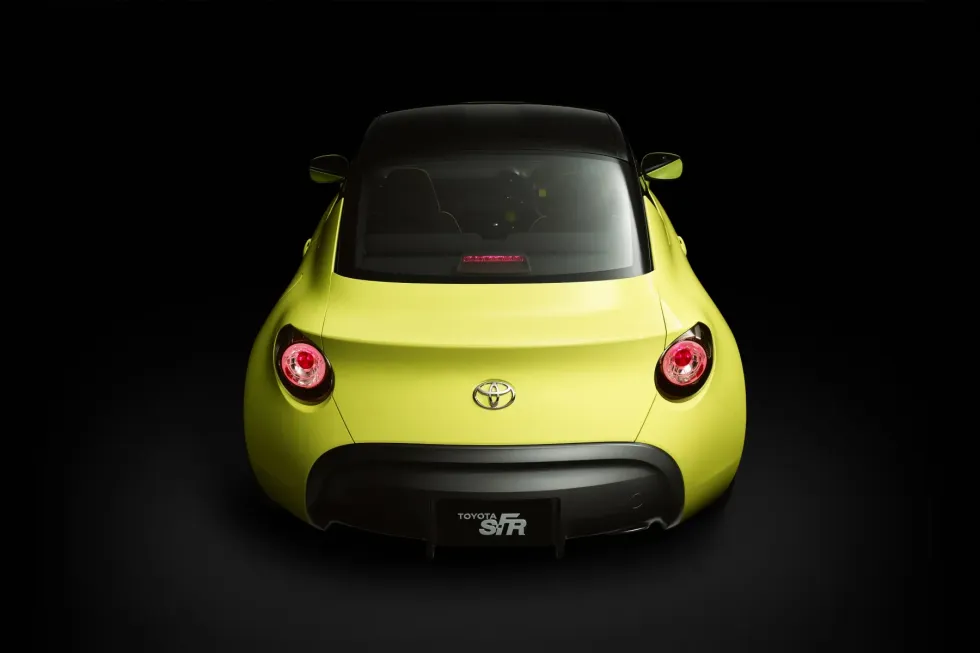
Buy
Resources
Entertainment
Magazine
Community
In This Article
Category:
Magazine
The Ventura-based '74 GTO embodied a number of firsts (most of them could be considered onlys, until the '04 models arrived). The first GTO to ride a unit-body platform, and the only GTO to be considered a compact car. The first 5.7 liter GTO--and the first GTO since 1966 packing fewer than 400 cubic inches. The only GTO with a Shaker hood. The only hatchback GTO built for production (an option). It's ironic to note that GM's X-platform was a lot closer to something European in size than was the sprawling Grand Am, with its faux-pontoon fenders and double-wide cabin size, which was advertised as the most European American car ever.
Though the Ventura was considered a compact, it had a wheelbase just four inches shorter than the '64 GTO (111 inches versus 115), and an overall length shorter by the same amount. Alas, it had chunked up to about 3,400 pounds. The engine itself was a special 200hp 350, with a bore of 3.8762 inches and a 3.75-inch stroke, two-bolt mains, heads with 89cc combustion chambers and 1.96/1.66 valves, and a mild 269/277 degree duration cam. A Q-jet carburetor fed the beast, and air came in from both the front of the car through a conventional air cleaner snorkel and through the Shaker scoop, which sucked in the high-density air mass that gathers at the base of the windshield. (Even the '74 Trans Ams couldn't have open Shakers, due to noise standards.) Compression was a shockingly low 7.6:1.
It would not be unrealistic to ask why the division couldn't at least drop a 400 in there, much less a 455. Pontiac V-8 engines are dimensionally identical regardless of displacement--none of this big-block/small-block nonsense like Chevy had--so it wouldn't be hard to swap in something a little hairier. And a lot of people did. As a bonus, the bigger mills were cleared for emissions-ready duty in Grand Prixs and Catalinas and such, which should have made the job easier still.
But the factory had to contend with a couple of things. First, outside of the Super Duty 455, the gruntiest V-8 Pontiac offered was rated at just 250hp. (The top 400-cu.in. engine had just 225hp.) An extra hundred cubic inches for just 50 net horsepower, when everyone had one eye on the sheiks turning off the oil spigots, didn't seem the wisest compromise. (Alas, the 455's 375 foot-pounds of torque, compared to the 350's 295 foot-pounds, would doubtless have made for some formidable quarter-mile figures.)
The 1974 GTO was introduced onto the market at the same time as the first OPEC oil embargo. Gas lines, daily bad news out of the Middle East, and factories pumping out gas hogs in larger numbers than ever before were neither a pretty nor welcome sight. You might think that the '74 GTO, then, was the right car at the right time--an interesting option for anyone interested in performance cars. Right?
Well...as it turns out, not so much. Sales actually did jump about 40 percent, up to 7,058 for the season, but Pontiac drew the legacy of a GTO to a quiet close.
But there's another yardstick to measure against here: Mustang. Though the two were not direct competitors in the marketplace, they followed a similar career path for the first decade of their lives. Massive hype. Iconic stature. Diehard owners. A steady growth in both power and creature comforts. And, in 1974, a massive downsizing onto an existing smaller platform (in the Mustang's case, the Pinto). Loyalists cried out in anguish. Yet only one was sent into a cryotank-induced slumber, not to re-emerge for 30 years. The other went on to sell about a million copies in its smaller, less powerful, not-what-it-once-was form that lasted until the summer of '78. Did those dark '70s years destroy the name and reputation? Ask the guy with a new 400+-hp Mustang GT in his driveway.
But the Mustang could be anything; the GTO was a very specific thing, pigeonholed as a muscle car in a time when muscle cars were considered more retrograde than ever. Take the muscle away and what's left? The potential for a GTO to live well into the power-neutered '70s was alive and well, but Pontiac walked away from the market it created--choosing instead to funnel its performance efforts into the Trans Am.
Recent
Toyota
Toyota is pulling out all the stops to compete with the likes of affordable sports cars like the Mazda Miata. The automaker reportedly plans to put the S-FR concept car, originally debuted in 2015, into production. With potential release dates slated for early-2026 or early-2027, perhaps Miata may not always be the answer.
A new report out of Japan confirmed that the Toyota S-FR concept, first seen at the 2015 Tokyo Motor Show, will hit the market to challenge the entry-level sports car segment. Forbes backs up this claim via its print edition of Best Car. According to the report, the Toyota S-FR will be produced in partnership with Daihatsu, a wholly owned subsidiary of Toyota, and Suzuki, of which the Toyota Motor Corporation owns 4.94 percent.
From the sounds of it, the S-FR will share a platform with the Daihatsu Vision Copen that was revealed at the 2023 Tokyo Mobility Show. It will supposedly feature the same two-plus-two seating as displayed in the concept, but will be even smaller and lighter than the Toyota 86 model.
The Toyota S-FR will reportedly get its power from a turbocharged three-cylinder engine that will send around 150 horsepower to the rear wheels. If these figures sound familiar, you may have also heard the rumors about Toyota reviving the Starlet with a GR performance version that has similar specs; a 1.3-liter engine producing 150 horsepower.
Like most concept cars, the S-FR’s design will see some changes before production, in this case reports point specifically to a smaller grille and altered headlights. Whether or not the production model will incorporate the concept’s aero elements is unknown.
Toyota’s target MSRP of $22,700 for the S-FR could potentially beat out the Mazda Miata by around $6,000. Whether or not the S-FR will be sold in the States to potentially compete with Toyota’s existing GR86 model’s sales is also, sadly, unknown, but we have our fingers crossed.
Keep reading...Show Less
What if I told you that not all muscle cars are from Detroit? No, I’m not talking about any of the rebellious machines from Kenosha. I’m talking about Newport Pagnell. Where exactly is Newport Pagnell you ask? It’s about 50 miles northwest of London, and the traditional home of Aston Martin, where thousands of its cars were built between the mid-1950s through 2007. Let’s take a look at this 1978 Aston Martin V8 Series 3 currently offered on Hemmings Auctions as a prime example of a non-Detroit muscle car.
How does the AMV8 stack up as a muscle car? Let’s count the ways: It’s got a booming, high-performance V8 under the hood that sends power to the rear wheels—and the rear wheels only. It’s a two-door coupe with a long hood and a fastback roof. It has a big hood scoop needed to clear a quartet of Weber two-barrel carburetors. It even has a Chrysler TorqueFlite automatic transmission for that authentic Yankee feel.

Rather than a lightweight sports car, the Aston Martin V8 is better considered a GT car, which seems to have a lot in common with American muscle cars. Even with aluminum body panels, the rather substantial Aston had a curb weight just a hair over 4,000 pounds, making it several hundred pounds heavier than a 1969 Dodge Charger R/T. It’s worth noting that despite being measurably smaller than the Charger, both cars share very similar proportions, with their long hoods, fastback rooflines, and short rear decks. An even closer comparison comes in the form of a ‘67 Ford Mustang, again with similar proportions but also the Aston having a wheelbase and overall length, width, and height very close to the American pony car.
The 1978 Aston Martin V8 is frequently referred to as a Series 3 since it was derived from the DBS, a model that launched in 1967 with an inline-six engine that was followed by the DBS V8, with a fuel-injected V8 engine. Both versions of the DBS were sold alongside each other into 1972, when, during the model year, the simply named V8 model supplanted both. With an updated front end that included a grille shape more reminiscent of Aston Martins past and a pair of headlamps rather than four, these interims V8s were considered Series 2 cars.

In 1973, Aston Martin dumped what had turned out to be a problematic mechanical fuel-injection system, instead opting for four Weber carburetors for its 5.3-liter V8. Multiple carburetion gives it good company with the likes of a Mopar 440 Six-Pack or Pontiac Tri-Power. That carburetor setup required additional hood clearance that resulted in the large scoop worn by such cars, though it was non-functional in terms of letting in any additional air to the intake.
The rest of the engine department takes a big departure from the standard American iron-block, overhead-valve setup. Aston Martin’s V8 featured all-aluminum construction and dual overhead camshafts on each cylinder head, driven by dual chains. Yes, it had hemispherical combustion chambers, even with just two valves per cylinder. Engineers specced a forged crankshaft and forged chrome-moly connecting rods.

Output for 1978 was estimated at 310 horsepower and 320 lb-ft of torque—pretty substantial numbers for a car built during the oil crisis era and before engineers had leveraged electronic fuel injection to win the battle against emissions regulations. In accordance with its muscle car vibe, most AM V8s of the period were equipped with a TorqueFlite three-speed automatic, complete with Mopar factory ratios of 2.45:1, 1:45:1 and 1:1, along with a limited-slip rear differential. A 3.31 final-drive ratio was standard, with 3.54:1 optional. A five-speed manual was available.
Distinctions from Detroit grow once you step inside an Aston Martin V8, which was essentially a handmade car, with very low production numbers. Each of the four seats was covered in leather, a material that extended to the door trim, steering wheel, shift knob and even the center console surround. Carpets were wool. Given its high price and object of luxury aspirations, each car was also packed with plenty of sound insulation to isolate occupants from road noise. Power assistance for the brakes and steering was standard, as were air conditioning, power windows and power locks.

With a 0-60 mph time of “about six seconds,” according to Aston Martin literature of the time, along with a top speed over 150 mph, the AM V8 was in nearly a class by itself. Torque wasn't quite like that of an unrestrained big block American V8 from the peak muscle car era, but the Aston Martin’s V8 engine still delivered power with a swift rush towards a redline over 5,000 rpm, though no such actual red line is indicated on the tach. Suspension included unequal-length control arms up front with an anti-roll bar and De Dion rear axle with parallel trailing arms and watt linkage in the rear. Coil spring were at all four wheels, as were disc brakes, with the rear disc inboard. Not designed to tackle a tight road course, the AM V8 was still noted as a competent high-speed handler.
This 1978 Aston Martin V8 Series 3 features a silver metallic body with a red leather interior. The selling dealer indicates that it was purchased from the second owner who it is believed purchased it from the original owner as he aged out of driving in his 90s. The car appears to have been very well maintained, with the seller sharing that the engine, transmission, paint, body and interior are all “highly original.”

Other information to note on this AMV8 are a slew of services performed last fall, including a “full tune-up,” rebuilt carburetors, new spark plugs and filters, new battery and an alternator rebuild. Everything is asserted to be functioning properly with the car seemingly ready to drive anywhere.
As one of less than 1,000 Series 3 examples made, this 1978 Aston Martin V8 coupe offers a uniquely British take on big V8 performance in a midsize car—a muscle car, but with a different accent.
Head on over to Hemmings Auctions and take a closer look for yourself.
Keep reading...Show Less










